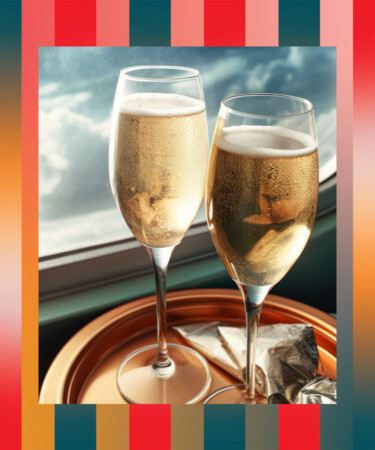Budget airlines are known for cutting costs at every corner — from minimizing leg room to restricting checked bags — but when it comes to beverages, they’re actually upping their game. Low-cost airlines like Allegiant, Spirit, and Frontier are building their premium alcohol offerings in the hopes you’ll ease the discomfort of your cramped, TV-less chair with some Johnnie Walker Blue Label that costs more than your plane ticket.
These airlines are actually tapping into a phenomenon spurred by inflation that the Wall Street Journal dubbed split-brain spending: consumers are cutting back on everyday necessities to feel more comfortable splurging on premium products, including booze. So while many fliers might find it preposterous to spend extra on a business class flight or an extra checked bag, they’re also more willing to treat themselves to a special drink mid-air — especially to take the edge off on a less-than-luxurious flight.
Previously, low-cost airlines offered predominantly low-quality drink options that matched their budget-friendly tickets. But as skilled upsellers, these airlines soon realized that passengers were willing to ball out on booze while on-board. In the case of Allegiant Air, through which some flights are listed for under $40, you can order Johnnie Walker Blue for $35 a shot and small bottles of Don Julio Reposado tequila or Grey Goose vodka for $15.
According to The Wall Street Journal, Don Julio Reposado tequila has been a hit on Allegiant, so much so that they expanded the regional offering to all flights nationwide. Additionally, the airline switched out its budget bubbles for La Marca Prosecco, which is nearly double the price but it is selling twice as many mini bottles.
Frontier airlines recently reported that it’s selling 10 to 15 percent more wine as a result of its beverage brand upgrades, and is also seeing lucrative results from including more high-end beer options like Voodoo Ranger IPA offered at $10 a can.
Spirits, wine, and beer have been seeing a shift towards premiumization, so it makes sense that more industries are embracing this trend — especially the ones driving people to drink at 30,000 feet.
